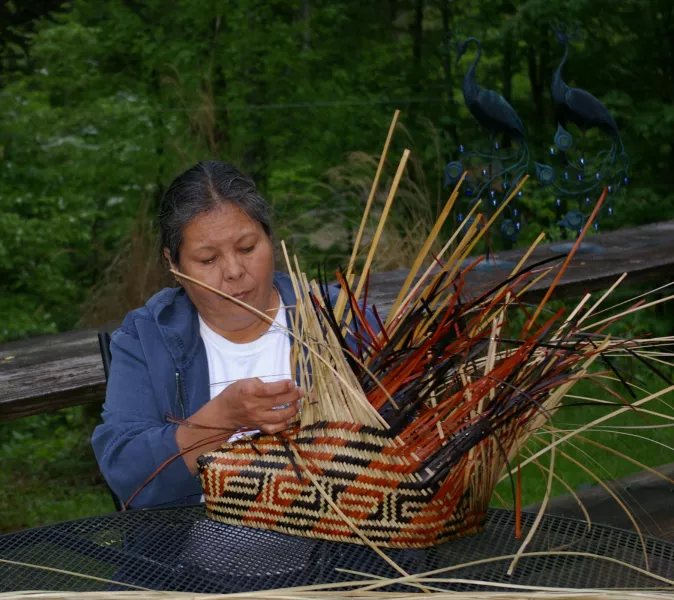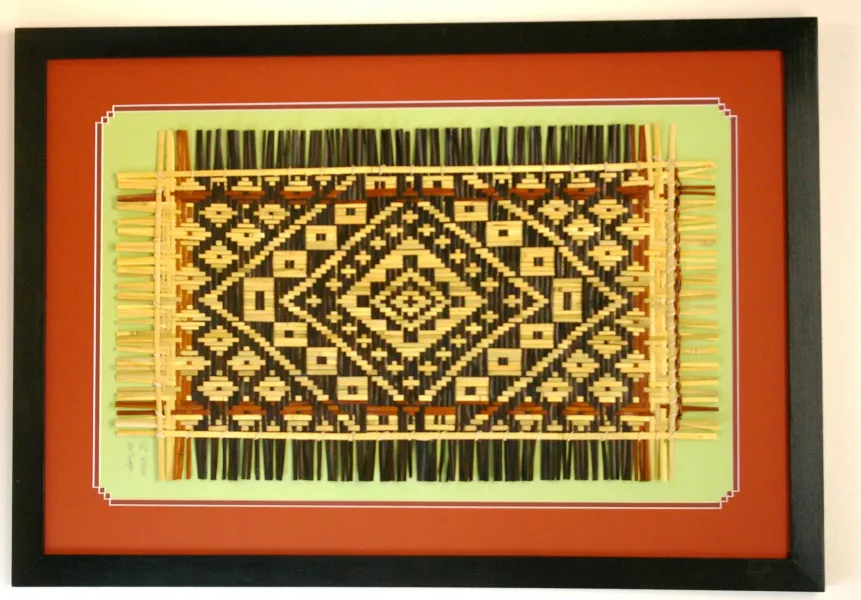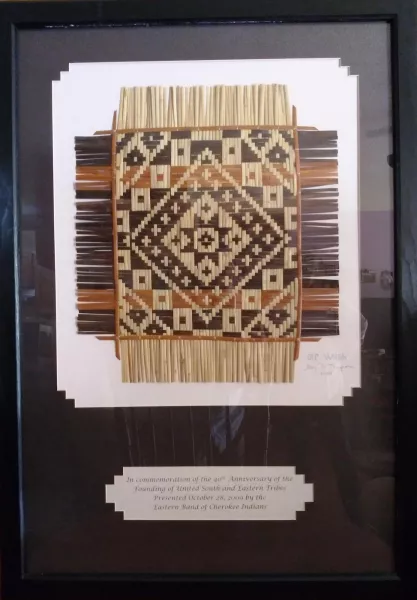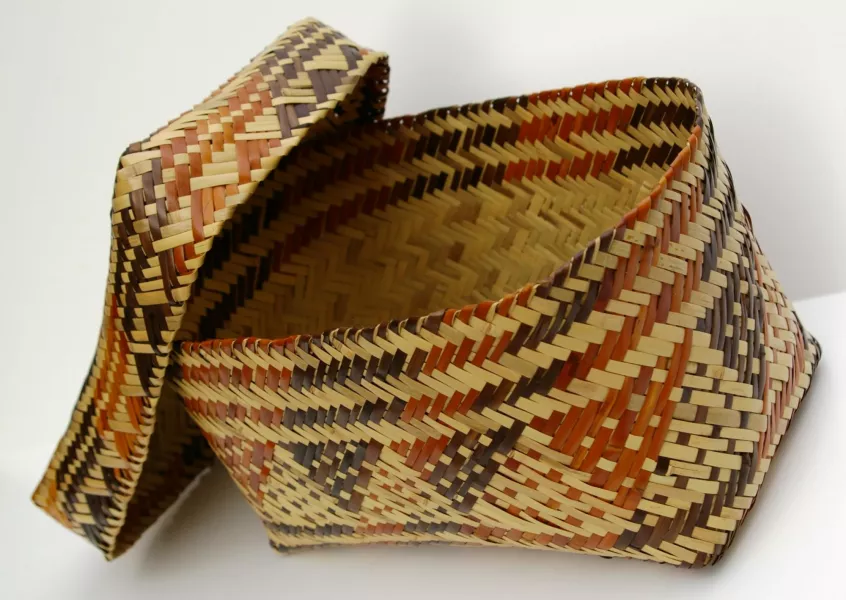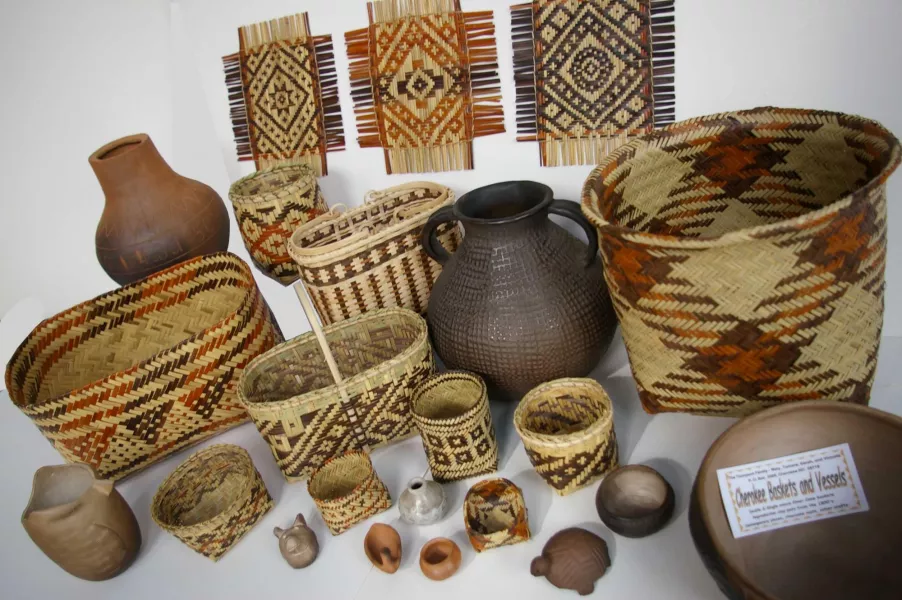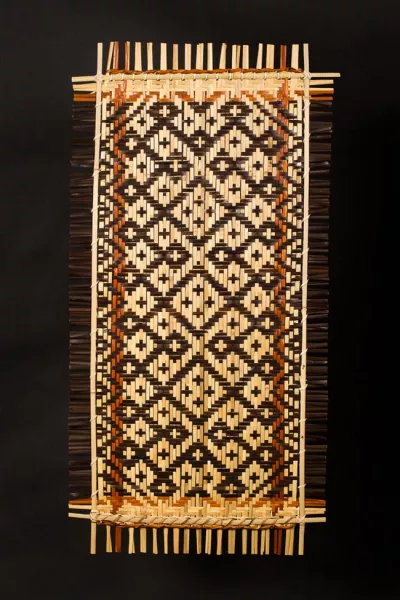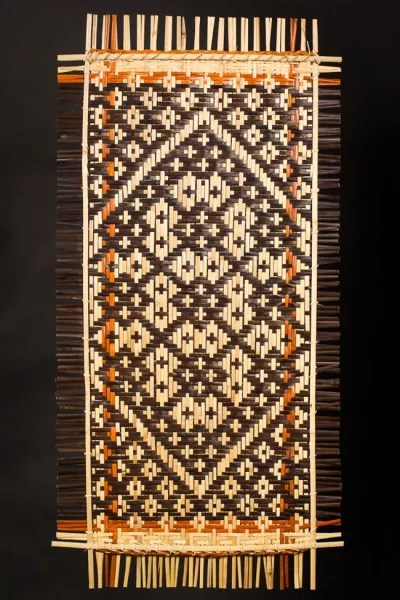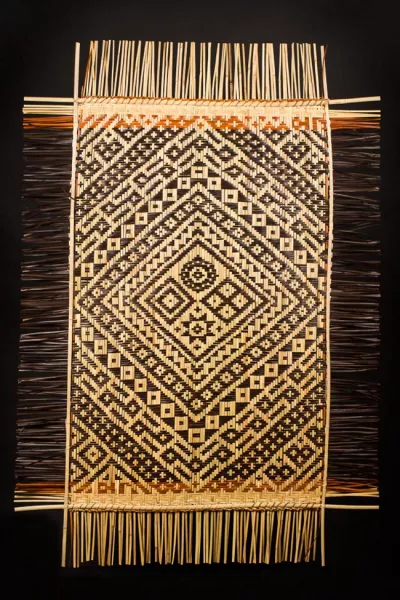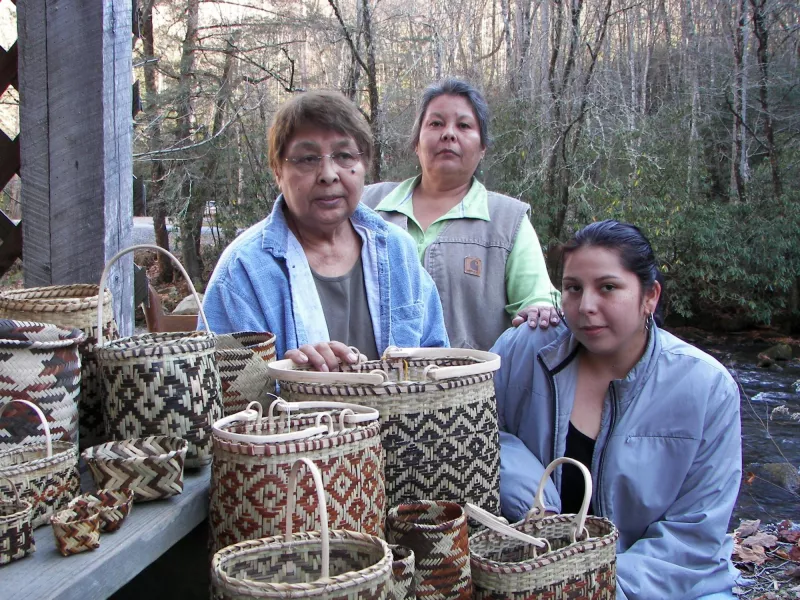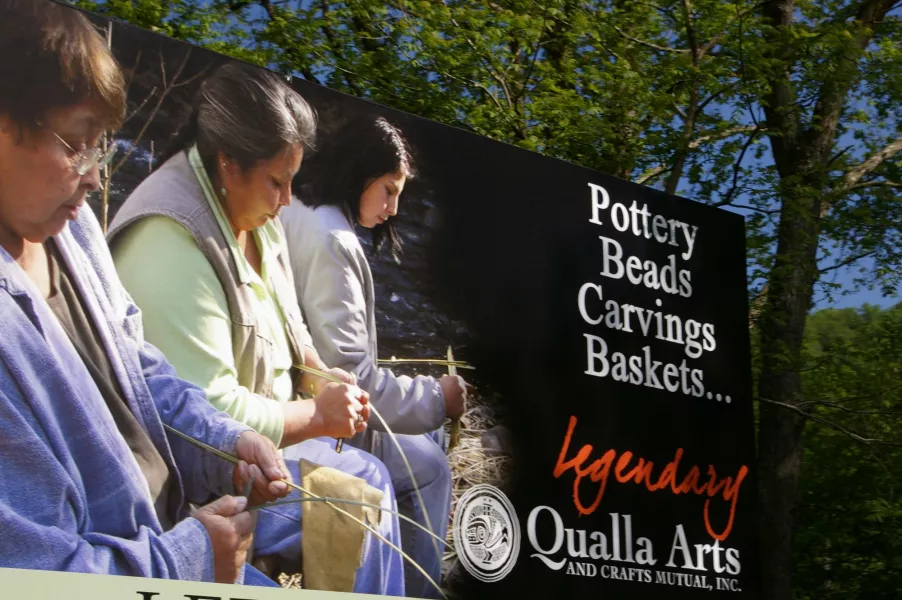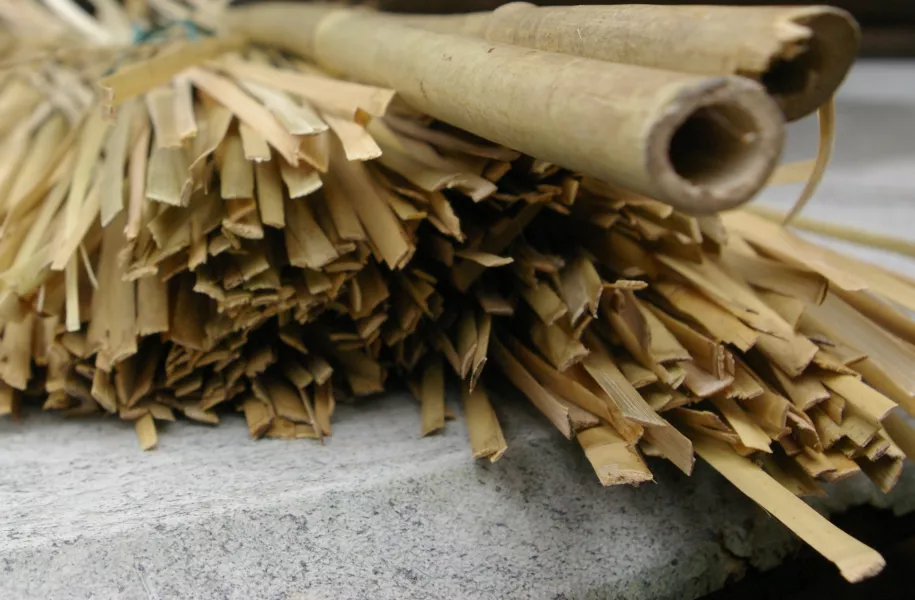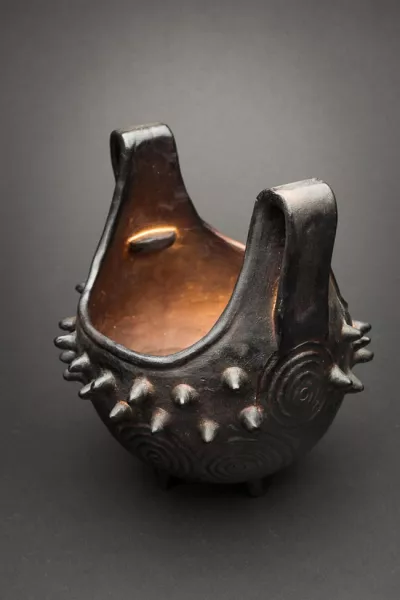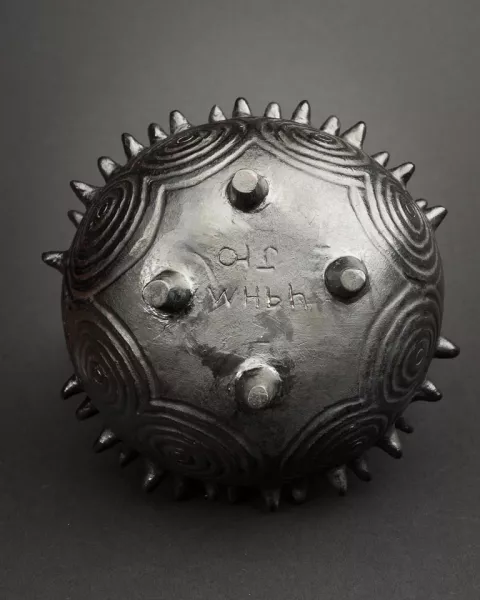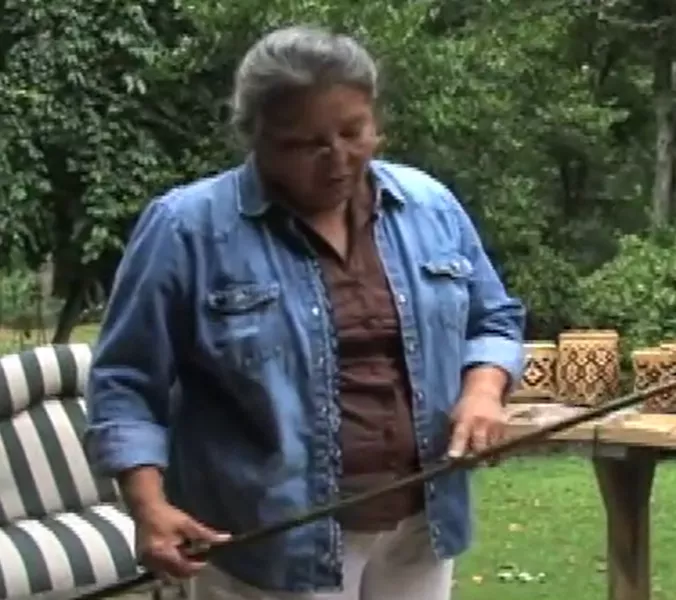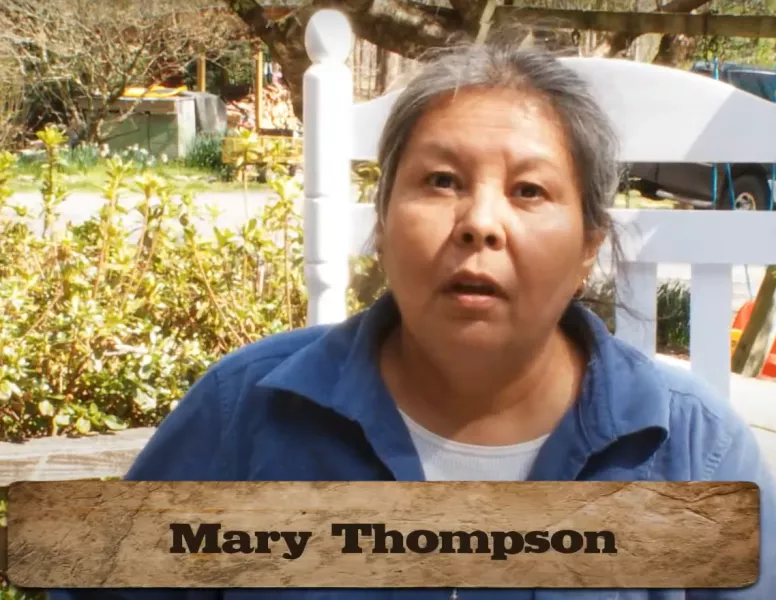Mary W. Thompson
Rivercane double weave basketry and stamped pottery
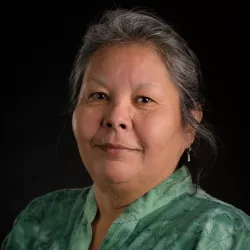
Recipient Information
Location
Cherokee (Swain County), North Carolina
Medium
Rivercane double weave basketry and stamped pottery
Year of Award
2021
Grant or Fellowship
Folk & Traditional Arts Master Artist Fellowship
Grant Amount
$0
Like her daughter, sister, mother, and grandmother, Mary W. Thompson is a traditional basket weaver. She is also an accomplished potter creating stamped pottery. Betty Maney, Thompson’s sister, is a recipient of a 2021 Folk & Traditional Arts Master Artist Fellowship as well.
“Mom made white oak baskets for extra income, to feed us,” explained Thompson. “Basketry was all around us, in our home and in grandma's home. Everyone gathered their white oak, honeysuckle, or maple trees form the forest, along with their roots and barks for dyes. My family would cut down the tree, carry it home, cut and process the splits to eventually weave the basket. As a kid, I would help where needed, or just be around. Watching and learning though we didn't realize it.”
Thompson mostly weaves baskets from rivercane, which is thought to be the oldest natural resource used for Cherokee basketry. She learned how to prepare the rivercane and make the intricate double-weave (double wall) cane baskets from Ramona and Lucille Lossiah who were at one time the only living practitioners among the Eastern Band of the Cherokee. Thompson also makes stamped pottery using both the coil and pinch pot processes. These vessels are often decorated using hand-carved paddle stamps.
“My art form is ever so entwined with my cultural traditions and history,” continued Thompson. “Much of this was nearly lost when invading Europeans thought it best that we be assimilated into their culture. The best way to accomplish this was to eradicate our culture, language, and spirituality. Fortunately, the art of basket-weaving and pottery-making survived and is to this day an inherent part of my culture. I have also taught and demonstrated pottery to many students, young and old. We want to engage our youth to practice our cultural traditions. Cherokee art classes are taught in our school system, childcare services, local arts and crafts co-ops, and the Museum of Cherokee Indian. We have more young artists practicing the arts. My grandchildren are making pottery. However, the rivercane and other weaving materials are scarce because their natural habitat is constantly being destroyed by development. Rivercane likes waterfront property too, which is limited in this area.”
Thompson has been working on studio and gallery space that can also be used as a classroom. She plans to do several updates on the space so she can host artists to create as well as share stories and knowledge with one another. “A space where I can teach and learn. I would like to have the time and freedom to create and show my work. This would be my place to continue a tradition of passing our Cherokee art and culture from one family member to the next, and from one generation to the next.” Her studio and gallery space are currently being considered for part of the Blue Ridge Craft Trail.
